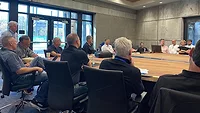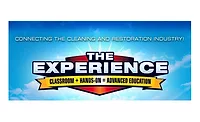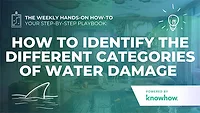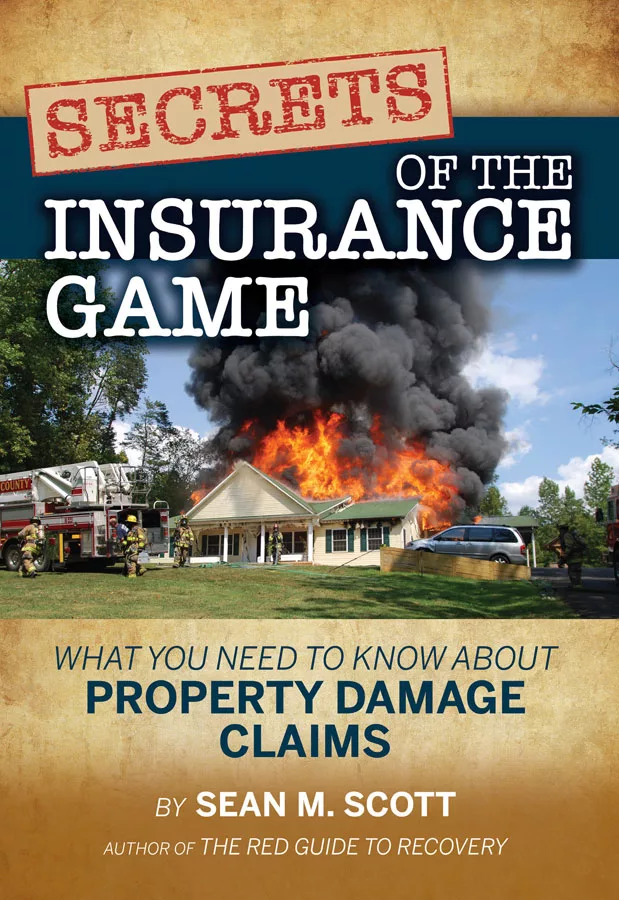The Standards of Our Time: Applying IICRC Categories of Water to a Job Situation

Credit: by-studio / iStock / Getty Images Plus
Grand Lake, Colorado is located 8,500 feet up in Rocky Mountain National Park. It is a beautiful, pristine area, subject to great temperature changes and a variety of precipitation, including snow, rain and hail, as well as amazing sunshine. And the homes there, as you might well imagine, see their fair share of water damage.
Recently, a neighbor asked if I would come over and take a look at the water damage that occurred the previous week when a pipe fitting expanded and separated under the sink on the upper level. The water ran through that level, down through the ceiling and fixtures and into the lower level of the home. The extent of the damage was severe.
Being this was a broken water pipe, I was looking at clean-water situation that flowed through the structure, materials and affected the contents, which sounded easy enough as I entered the home. What I was not prepared for the destruction that had occurred. There was sheetrock hanging off the ceiling and walls; light fixtures loose and hanging down by the electrical wires; wood crown molding falling off the walls; carpets floating; wood floors buckling and the cabinets are sagging. Wool area rugs had bled into the carpet they were sitting on, and the stereo equipment and big-screen TV were sitting in water. And lest we not forget the strong odor.
As experts in water damage, how do we evaluate the extent of damage to the property? What criteria do we use? Are there any concerns that we should know about going into the property? If the water ran for a week, is there any concern, or should I expect to see any changes to the environment?
The IICRC has written the industry standards for us to use as we consider the condition of the jobs we inspect and restore. The IICRC S500 Standard and Reference for Professional Water Damage Restoration Third Edition was published in April 2006. The document covers the categories of water damage to consider in evaluating water damage situations. It also covers other areas we need to consider, including: Inspections, Preliminary Determinations, and Pre-Restoration Evaluations; Safety and Health; Structural Restoration; and Contents Evaluation and Restoration. So let’s use the above scenario to see how the categories of water apply.
The water damage was caused by a broken pipe, so assume this is a clean-water situation, or Category 1 as described in the S500. What we need to consider is what happens to the job over time. Water ran for over a week, and the environment has been grossly wet for that period of time. Can a job situation change over time? Do we need to review the industry standard to better understand the standard of care for the job we are working on? The answer is yes; it is up to you to review the S500 and implement the standard of care on all water damage restoration jobs. Let’s review the IICRC S500 “Categories of Water” for consideration in this job from excerpts taken directly from the IICRC S500.
In this document the use of the term “microorganisms” primarily refers to bacteria and molds. It is true that some molds can colonize in 72 hours and bacteria can start to multiply in just a few hours. These time frames are based upon ideal growing conditions and not necessarily the conditions that you find in the indoor environment. In some circumstances these microorganisms may take considerably longer to grow due to less favorable conditions. It was not intended for the time frames mentioned here or reflected in this graphic to be absolutes, but a starting point at which you might want to be concerned. The terms Clean, Gray and Black are used in this illustration to aid the reader in applying the concepts presented. This document has defined and uses the terms Category 1, 2, and 3 to describe the range of contamination in water.
Determining the Category of Water
The Categories of Water, as defined by the IICRC S500, refer to the range of contamination in water, considering both its originating source and its quality after it contacts materials present on the job site. Time and temperature can also affect the quality of water, thereby changing its Category. Restorers should consider potential contamination, defined as the presence of undesired substances; the identity, location and quantity of which are not reflective of a normal indoor environment, and may produce adverse health effects, cause damage to structure and contents and/or adversely affect the operation or function of building systems.
Category 1 - Category 1 water originates from a sanitary water source and does not pose substantial risk from dermal, ingestion, or inhalation exposure. Examples of Category 1 water sources can include, but are not limited to: broken water supply lines [like the job we are evaluating]; tub or sink overflows with no contaminants; appliance malfunctions involving water-supply lines; melting ice or snow; falling rainwater; broken toilet tanks, and toilet bowls that do not contain contaminants or additives. However, once clean water leaves the exit point, it may not remain clean once it contacts other surfaces or materials.
The cleanliness of Category 1 water may deteriorate to Category 2 or 3 for many reasons, including but not limited to: contact with building materials, systems and contents; mixing with soils and other contaminants. Some factors which influence the potential organic and inorganic load in a structure include the age and history of the structure, previous water losses, general housekeeping, the type of use of the structure (e.g., nursing home, hospital, day care, warehouse, veterinary clinic), and elapsed time or elevated temperature. Odors can indicate that Category 1 water has deteriorated.
This job’s water came from a Category 1 source, a broken water supply line. Once the water left the exit point it did not remain clean, but traveled through surfaces and materials. We must evaluate how contact with building materials, systems and contents, mixing with soils and other contaminants affect the Category of Water. Is there such a thing as clean water? The home is 14 years old, a log structure with no previous water damage and very good housekeeping. The water ran for up to a week, seven days, and we know the effects of time are very important to evaluate (Figure 1). There is a strong odor in the home, so we know that the Category 1 has deteriorated. But did it become a Category 2, or a Category 3?
Category 2 - Category 2 water contains significant contamination and has the potential to cause discomfort or sickness if contacted or consumed by humans. Category 2 water can contain potentially unsafe levels of microorganisms or nutrients for microorganisms, as well as other organic or inorganic matter (chemical or biological). Examples of Category 2 water can include, but are not limited to: discharge from dishwashers or washing machines; overflows from washing machines; overflows from toilet bowls on the room side of the trap with some urine but no feces; seepage due to hydrostatic pressure; broken aquariums and punctured water beds.
The cleanliness of Category 2 water can deteriorate for many reasons, including but not limited to: contact with building materials, systems, and contents; mixing with soils and other contaminants. Some factors that influence the potential organic and inorganic load in a structure include the age and history of the structure, previous water losses, general housekeeping, the type of use of the structure, and elapsed time or elevated temperature.
The odor indicated there was something else going on in the environment. Further inspection found visible mold growing on the sheetrock walls in the lower areas, wood log exterior walls (but not interior face walls) and on the carpet. With this information we can conclude the category we are dealing with has changed to a contaminated situation, and from a Category 1 to at least a Category 2 situation. Now, consider whether the job has further deteriorated from a Category 2 to a Category 3:
Category 3 - Category 3 water is grossly contaminated and can contain pathogenic, toxigenic or other harmful agents. Examples of Category 3 water can include, but are not limited to: sewage; toilet backflows that originate from beyond the toilet trap regardless of visible content or color; all forms of flooding from seawater; ground surface water and rising water from rivers or streams, and other contaminated water entering or affecting the indoor environment, such as wind-driven rain from hurricanes, tropical storms, or other weather-related events. Such water sources may carry silt, organic matter, pesticides, heavy metals, regulated materials, or toxic organic substances.
Special Situations - If a regulated or hazardous material is part of a water damage restoration project, then a specialized expert may be necessary to assist in damage assessment, and government regulations apply. Regulated materials posing potential or recognized health risks may include, but are not limited to: arsenic, mercury, lead, asbestos, polychlorinated biphenyls (PCBs), pesticides, fuels, solvents, caustic chemicals, radiological residues. For situations involving visible or suspected mold, refer to IICRC S520 Standard and Reference Guide for Professional Mold Remediation.
It is important to remember that the Category of water initially determined can change during the course of the project (reference Standard Figure 1, To Prevent Amplification of Microorganisms, Prompt Response is Necessary for all Categories of Water Intrusion).
From this information, we can see that the job situation moved from a Category 1 to a Category 3, and we will also need to reference the IICRC S520 Standard and Reference Guide for Professional Mold Remediation because there was both visible mold and a strong odor.
Figure 1 shows the effects of time on microbial growth. This chart should be used by all restorers while processing water damage jobs and discussing cases with insureds and insurance representatives (Note: In subsection C, in Category 2, the size of the area has grown substantially since the last update because the S500 Committee realized that the majority of the water damage jobs restored are a Category 2.).
Our inspection of this job site revealed a Category 3 water loss, which needs to be treated quite differently that a Category 1 water loss. It is up to the professionals in the water damage industry to apply the standard of care when approaching any job. That’s how to keep raising the bar, and our profile, in the marketplace. If you liked this feature circle 132 on page 51.
Looking for a reprint of this article?
From high-res PDFs to custom plaques, order your copy today!







